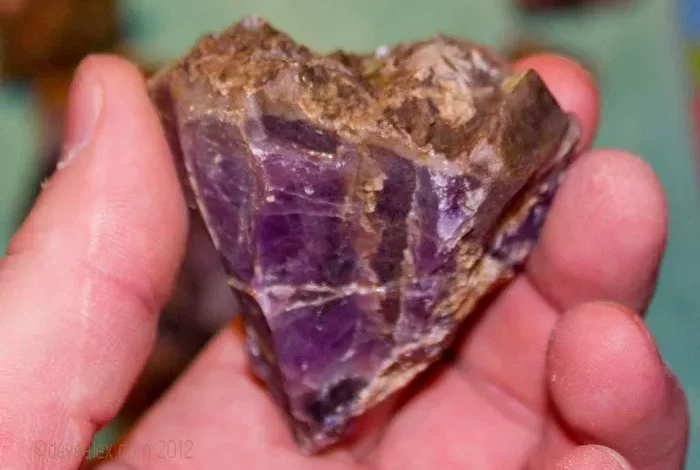Amethyst is a stunning gemstone prized for its captivating purple color and rich history. As one of the most popular and widely recognized gemstones in the world, amethyst is cherished for its beauty, durability, and spiritual significance. However, not all shades of amethyst are created equal, and certain colors command higher prices than others. In this article, we will explore the factors that influence the value of amethyst, including color, and discuss which color of amethyst is the most valuable.
Understanding Amethyst
Amethyst is a variety of the mineral quartz and is known for its distinctive purple color, which ranges from pale lilac to deep violet. The color of amethyst is caused by trace amounts of iron within the crystal structure, which can vary in concentration and distribution, resulting in a wide range of hues and tones.
Amethyst has been prized for centuries for its beauty and symbolism and has been used in jewelry, amulets, and religious artifacts by cultures around the world. The name “amethyst” is derived from the Greek word “amethystos,” which means “not intoxicated,” as ancient Greeks believed that wearing amethyst could protect against drunkenness and promote sobriety.
Factors Affecting Amethyst Color
Several factors influence the color of amethyst, including the following:
Hue: The hue or dominant color of amethyst is one of the most important factors in determining its value. Amethyst is typically purple, but it can also exhibit secondary hues such as blue, red, or pink. Stones with a pure, vivid purple hue are considered the most valuable, while those with secondary hues may be less desirable.
Saturation: The intensity or saturation of color is another key factor in determining the value of amethyst. Stones with a high level of saturation and depth of color are considered more valuable than those with a lighter or less saturated hue.
Tone: The tone of amethyst refers to the lightness or darkness of the color. Stones with a medium to medium-dark tone are generally considered the most desirable, as they exhibit the best balance of color saturation and brilliance.
Clarity: The clarity of amethyst, or the presence of inclusions and internal flaws, can also impact its color and overall appearance. Stones with minimal to no visible inclusions are considered more valuable than those with visible flaws that detract from the beauty of the stone.
Cut: The cut of amethyst can also affect its color and brilliance. Well-cut stones with symmetrical facets and a good polish will exhibit the best color and light reflection, enhancing the overall beauty and value of the gemstone.
What Color Amethyst is Most Valuable?
While all colors of amethyst are prized for their beauty and rarity, the most valuable color is generally considered to be a pure, vivid purple with no visible secondary hues. Stones with this coloration are often referred to as “royal purple” amethyst and are highly sought after by collectors and jewelry enthusiasts for their intense hue and exceptional clarity.
Royal purple amethyst is prized for its rich, saturated color, which ranges from deep violet to vibrant purple. These stones exhibit a captivating brilliance and clarity that is reminiscent of royalty and luxury, making them highly desirable for use in fine jewelry and collector’s pieces.
In addition to its stunning color, royal purple amethyst often exhibits a high level of transparency and brilliance, with minimal to no visible inclusions. These qualities enhance the overall beauty and value of the gemstone, making it a prized addition to any gemstone collection or jewelry wardrobe.
Other Desirable Colors of Amethyst
While royal purple amethyst is the most valuable color, there are several other colors of amethyst that are also highly prized and sought after by collectors and jewelry connoisseurs. These include:
Lavender: Amethyst with a light, delicate purple coloration is known as lavender amethyst and is prized for its soft, ethereal hue. Lavender amethyst often exhibits a subtle, feminine beauty that is reminiscent of spring flowers and pastel colors.
Deep Violet: Amethyst with a deep, rich violet coloration is highly sought after for its intense hue and striking appearance. Deep violet amethyst is prized for its bold and dramatic color, which adds a touch of sophistication and elegance to any piece of jewelry.
Rose de France: Amethyst with a pinkish-purple coloration is known as Rose de France amethyst and is valued for its delicate and romantic hue. Rose de France amethyst often exhibits a soft, rosy pink color that is reminiscent of a summer sunset, making it a popular choice for feminine and vintage-inspired jewelry designs.
Reddish-Purple: Amethyst with a reddish-purple coloration is relatively rare but highly prized for its unique and vibrant hue. Stones with this coloration exhibit a warm, fiery purple-red color that is reminiscent of fine wine or ripe berries, making them a valuable addition to any gemstone collection.
Conclusion
Amethyst is a beautiful and versatile gemstone prized for its captivating purple color and rich history. While all colors of amethyst are valued for their beauty and rarity, the most valuable color is generally considered to be a pure, vivid purple with no visible secondary hues. Known as “royal purple” amethyst, stones with this coloration are highly sought after by collectors and jewelry enthusiasts for their intense hue and exceptional clarity. Whether you’re looking for royal purple amethyst or another color variation, there are many reputable sources where you can find high-quality stones to add to your collection or jewelry wardrobe. By understanding the factors that influence the value of amethyst and knowing where to buy it, you can make informed purchasing decisions and enjoy the beauty and allure of this exquisite gemstone for years to come.


